New Market Space Creation
Yes, you can create new markets, or new space within a market.
The thought of creating a new market is daunting to most people. You don’t have to create the next Apple, Amazon, or Uber to create your own space. Si2 can help you simplify the concept of creating a new market into something actionable and realistic. It can be as simple as creating space in your market where there are no competitors, to filling a space between markets where unmet demand is.
What is Blue Ocean Strategy?
Blue Ocean Strategy is the leading methodology on how to find new market space where there is unmet customer demand. The concept and tools were created in 2004 by W. Chan Kim and Renée Mauborgne.
Blue Ocean Strategy helps you create and capture uncontested market space, making the competition irrelevant. The theory states that market boundaries and industry structures aren’t certainties. These boundaries and systems can be changed to meet the needs of new customers and create a leap in value for them. You create the rules for the new market space, not your past competitors.
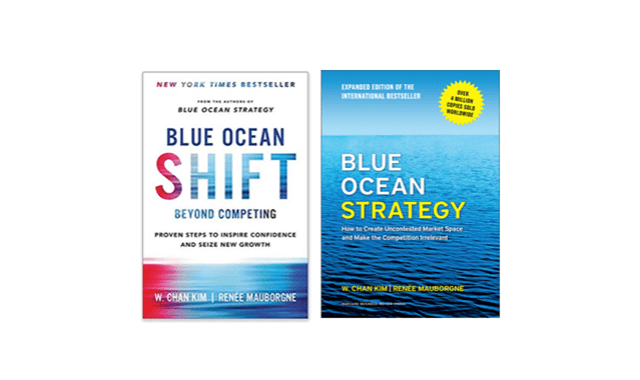

What Are Red And Blue Oceans?
“Red oceans” represent the current markets being fought over by competitors in that space. Firms fight amongst each other in terms of price wars, new product features, marketing campaigns and more. These battles between companies turn the current market waters “red with blood”, hence the term red ocean.
“Blue oceans” represent the vast, uncontested, market space that has not been explored by others. These blue oceans represent all of the unknown market space in existence. The Blue Ocean Strategy process is not about looking at your current customer segments and market, but at looking at non-customers that have similar jobs-to-be-done as your current market.
(Top image credited to Simon Associates Management Consultants. Bottom image credited to ClearPoint Strategy.)
What Are The Differences in Red & Blue Oceans?
In Red Oceans companies focus on the existing market space and trying to beat thier competitors. Each competitor tries to take market share from the other in order to grow. Firms usually have to decide if they want to be low-cost leaders, high-priced niche players, or in the middle just competing on beting better at sales and marketing.
In Blue Oceans companies focuson creating new market space. They construct the rules of the maket that enable them to capture unmet demand. By doing this, firms can create a low-cost offering, but price it for a high margin because they are giving the new customer a leap in value from thier previous solution. This can only be done by truly understanding the unmet needs of the customer and how you can fill those better than the existing alternatives.
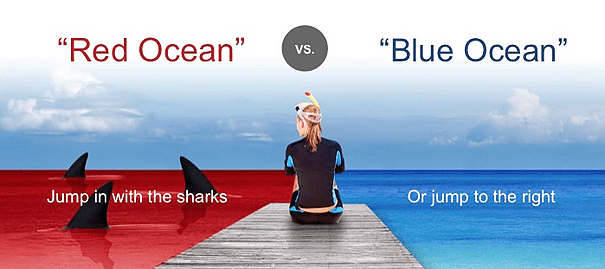
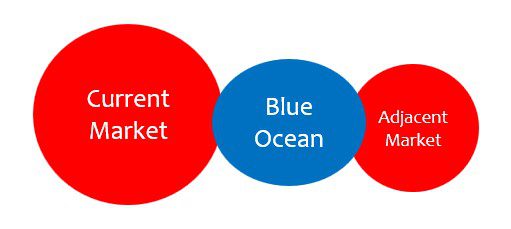
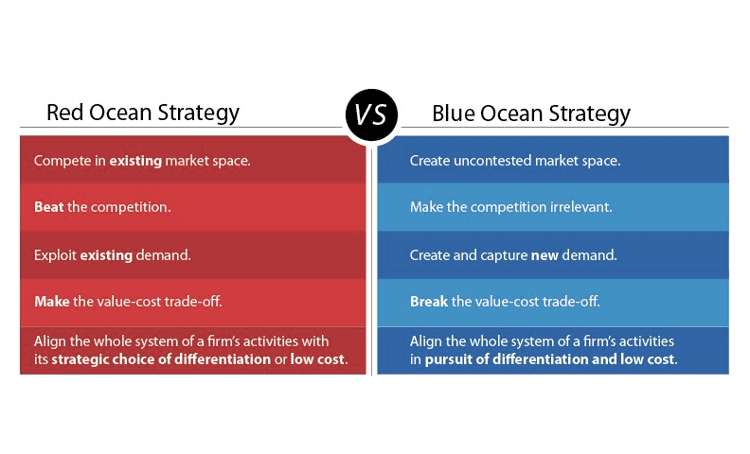
How Do You Create Blue Oceans?

Change Your Value Curve
The key tool in the Blue Ocean Strategy journey is the Strategy Canvas. It depicts your ‘value curve’ compared to your key competitors in your current industry. The goal is to be objective and compare your product/service on the factors you think you compete on now.
Si2 has adapted the Strategy Canvas from Kim & Maurborgne into the Value Curve Canvas. The canvas helps you focus on the jobs, pains, and gains that the non-customers have that you are targeting. The concept of jobs-to-be-done will be included in the process and you can find more about it below.
The goal of the journey is to identify non-customers that have needs (jobs to be done) that you can solve by slightly changing what your offer focuses on. We can only discover and validate what is most important to this new market by talking with them and observing them. We can then eliminate a few factors that this new customer segment does not need, reduce or increase our focus on specific factors, and create new features that are critical to this new segment.
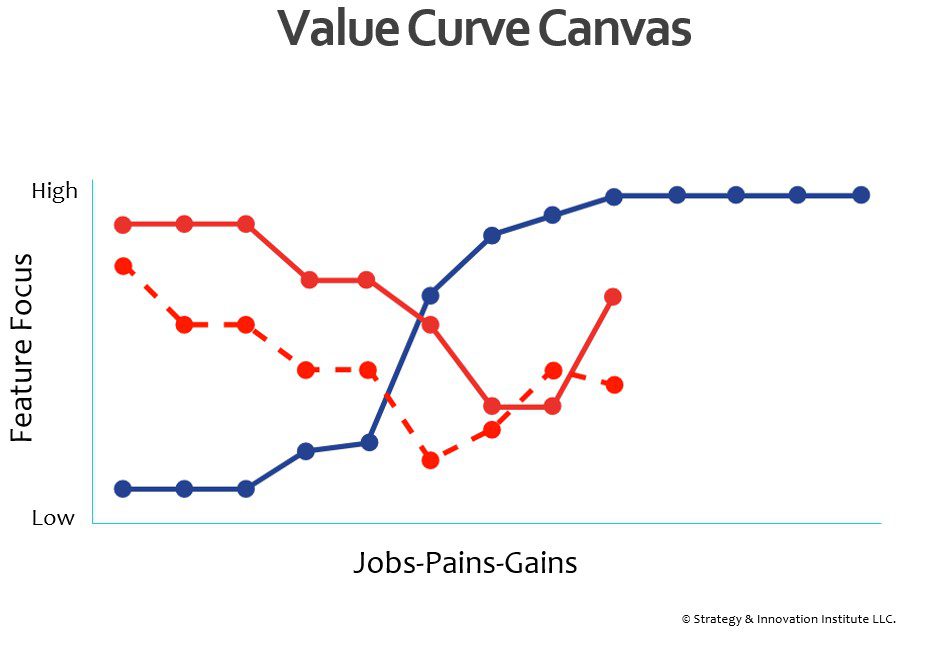
Blue Ocean Strategy Examples

Cirque du Soleil competes against other circuses. By examining the competing factors that are most important to the new customer segment they were targeting, they were able to change the value curve significantly from the other competitors. They lowered costs, while at the same time increasing ticket prices due to the value they provided.
Uber did not try to disrupt the taxi industry. That was just collateral damage. They set out to solve the problem of getting non-taxi goers from point A to point B. They changed the experience by using technology to engage with the customer. Uber also lowered their costs by using the drivers own vehicle.
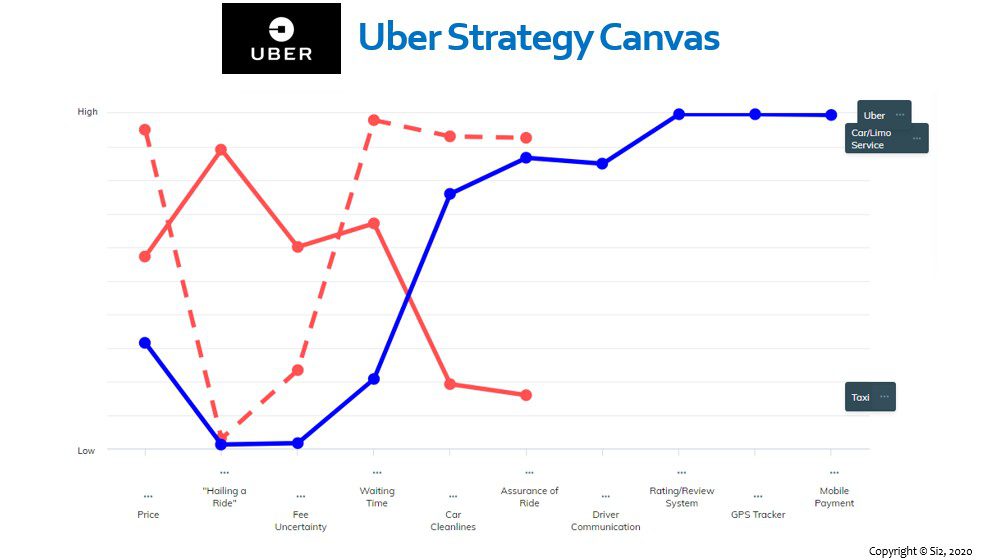
Creating New Market Space
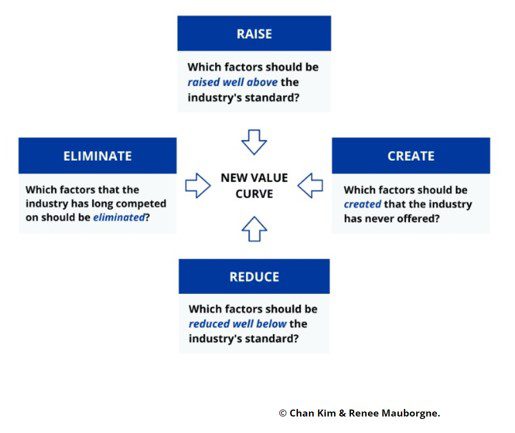
Gather Insights On Jobs-To-Be-Done
- As we discover where new opportunties are to solve unmet demand, we must gather insights from the new customer prospects to uncover their true needs. We look at these needs as jobs-to-be-done.
Reconstruct Market Boundaries
- You are creating your own rules for how this new market space is created. You can reconstruct the boundaries to how you see fit. Your team should create these boundaries by using the feedback from prospects as to what matters most to them as they look to get jobs done in a better way.
Reduce & Elimate Costs
- Run fast experiments to validate what jobs, pains, and gains this new market values the most. We can then eliminate a few features that you compete upon now, and reduce others which significantly reduces your internal costs.
Prioritize & Create To Add Value
- Raise those features that are priorities, and create new features that don’t exist currently. Kim & Maurborgne created the ERRC Grid and Four Actions Framework that helps us visualize these findings so we can create a new Value Curve.
Blue Ocean Strategy Workshop Outcomes
- Innovate and grow by finding unmet demand
- Create uncontested market space that makes your competition irrelevant
- Change your mindset to look past current market boundaries
- Learn and apply proven processes and tools that will become a part of your strategic planning
- Gain buy-in from key employees/members to drive and own the process
- Create a leap in value for both buyers and the company
- Break the value-cost trade off, and “break-down the current market walls”

Additonal Tools Used in Blue Ocean Workshops
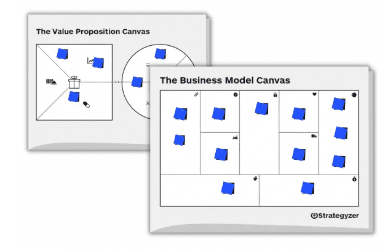
Business Model Design
Business models must be created for any new idea or market. We will use the Business Model Canvas to document and design your new Blue Ocean idea.
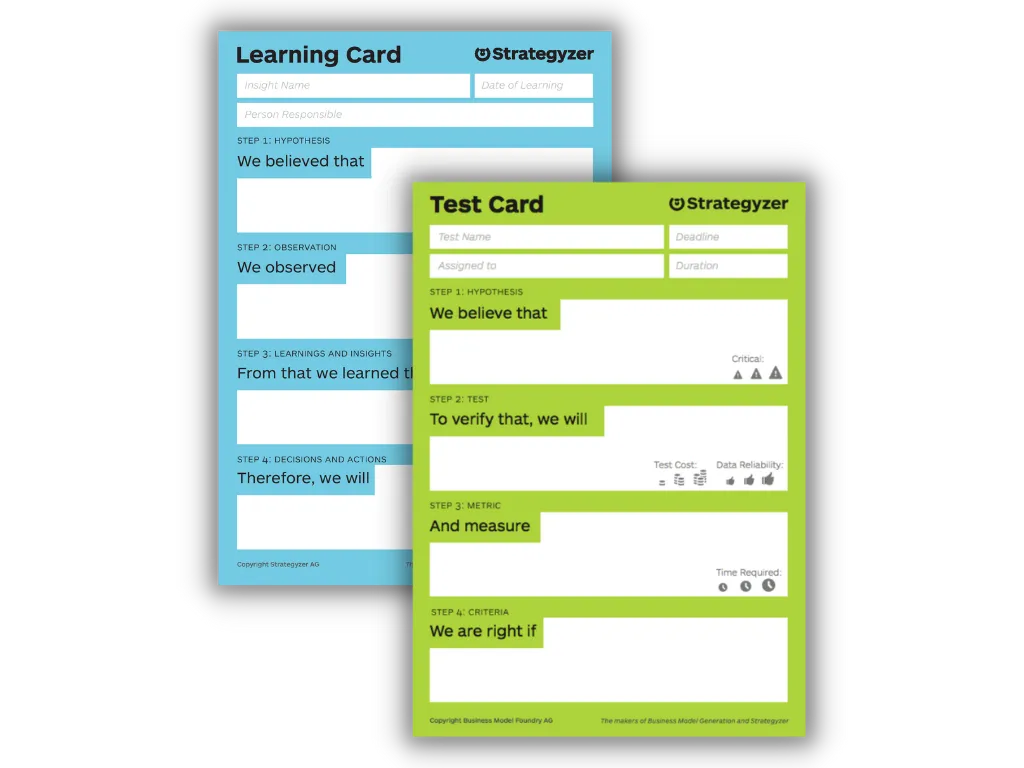
Testing Business Ideas
How do you know what customers want? How do you know which features to add or eliminate? Testing helps you reduce the risk of investing in business models that might not work out, while also helping you find the best route to growth.

Jobs To Be Done
You need to understand your customer’s problems better than they do. To solve problems, customer’s ‘hire’ products and services to “get a job done!”


Brian is one of the leading Blue Ocean Strategists in the US. He has been trained by the Blue Ocean Academy and has spent years researching Blue Ocean Strategy.

